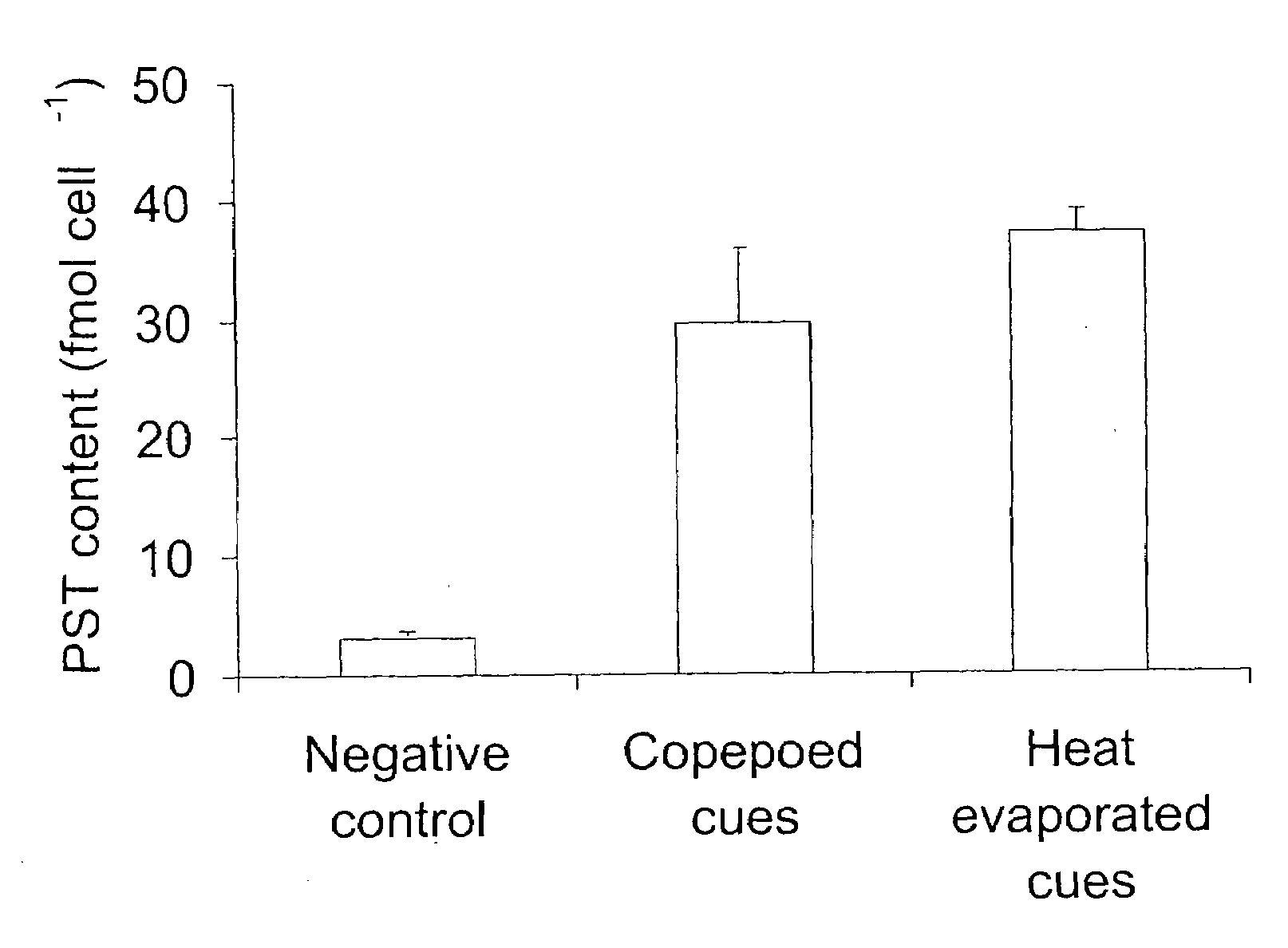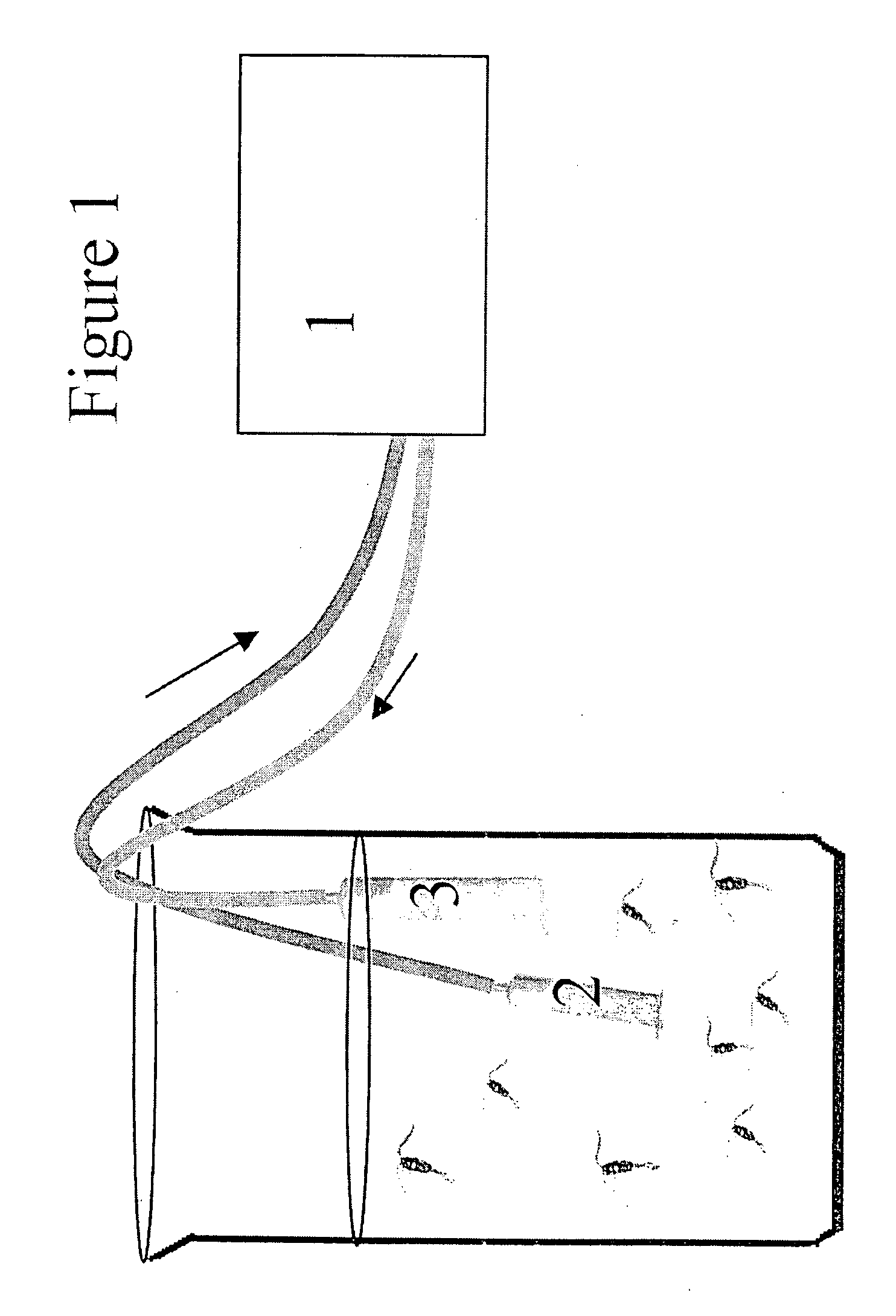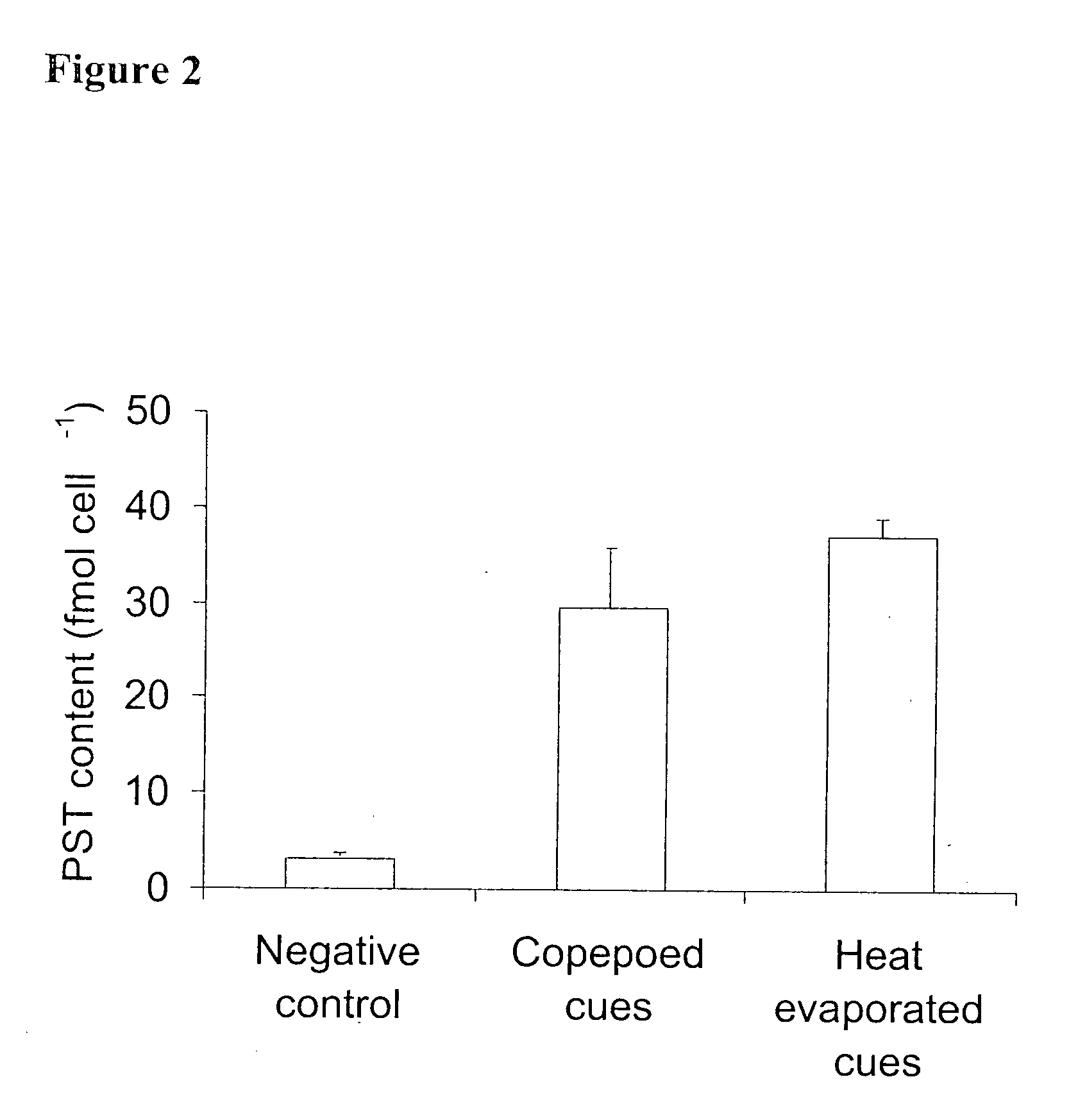Method to enhance production of paralytic shellfish toxins from dinoflagellate cultures
- Summary
- Abstract
- Description
- Claims
- Application Information
AI Technical Summary
Benefits of technology
Problems solved by technology
Method used
Image
Examples
example 1
Sequestering the Cues
[0023]Solid phase extraction (SPE) columns (Isolute ENV+ 50-500 mg columns, Argonaut Inc., Redwood City, Calif., USA) can be used to sequester the cue(s) from seawater conditioned with intact copepods. The ENV+ column packing has suitable properties to retain copepod derived signals from seawater and does not require conditioning with organic solvent before use which is considered an advantage because organic solvent from the conditioning may other ways have negative effects on the copepods.
[0024]The inducing cues can be continuously extracted from water containing copepod source organisms (FIG. 1) if water containing intact copepods, preferably living, is continuously pumped through a SPE column in a closed system (FIG. 1). It is likely that the activity can also be obtained from whole organism extracts from copepods, this will however result in a much more complex sample matrix, containing more compounds other than the actual inducing cue.
[0025]For the continu...
example 2
Paralytic Shellfish Toxin Production Enhancement
[0026]The successful extraction of inducing cues was verified using a toxic strain of Alexandrium minutum, obtained from Göteborg University Marine Culture Collection, Gothenburg, Sweden (GUMACC #83 strain synonyms CCMP 113 Al and Al 1V). A. minutum was cultured in autoclaved K medium (5) at 18° C. with 150 μmol m−2 s−1 provided by fluorescent tubes,14:10h light:dark cycles. Experiments with other strains of A. minutum show similar results to the experiments with A. minutum GUMACC #83, and it can therefore be expected that other strains of Alexandrium spp. will respond in a similar way to copepod scents.
[0027]The sequestered compounds can be eluted from the SPE columns into a small volume of methanol (100%). The extract, now containing the active compound can be added to culture vessels and evaporated till dryness. Evaporation with centrifuge vacuum evaporation, a stream of nitrogen gas, or heating samples to 70 degrees C. in air, does...
PUM
 Login to View More
Login to View More Abstract
Description
Claims
Application Information
 Login to View More
Login to View More - R&D
- Intellectual Property
- Life Sciences
- Materials
- Tech Scout
- Unparalleled Data Quality
- Higher Quality Content
- 60% Fewer Hallucinations
Browse by: Latest US Patents, China's latest patents, Technical Efficacy Thesaurus, Application Domain, Technology Topic, Popular Technical Reports.
© 2025 PatSnap. All rights reserved.Legal|Privacy policy|Modern Slavery Act Transparency Statement|Sitemap|About US| Contact US: help@patsnap.com



